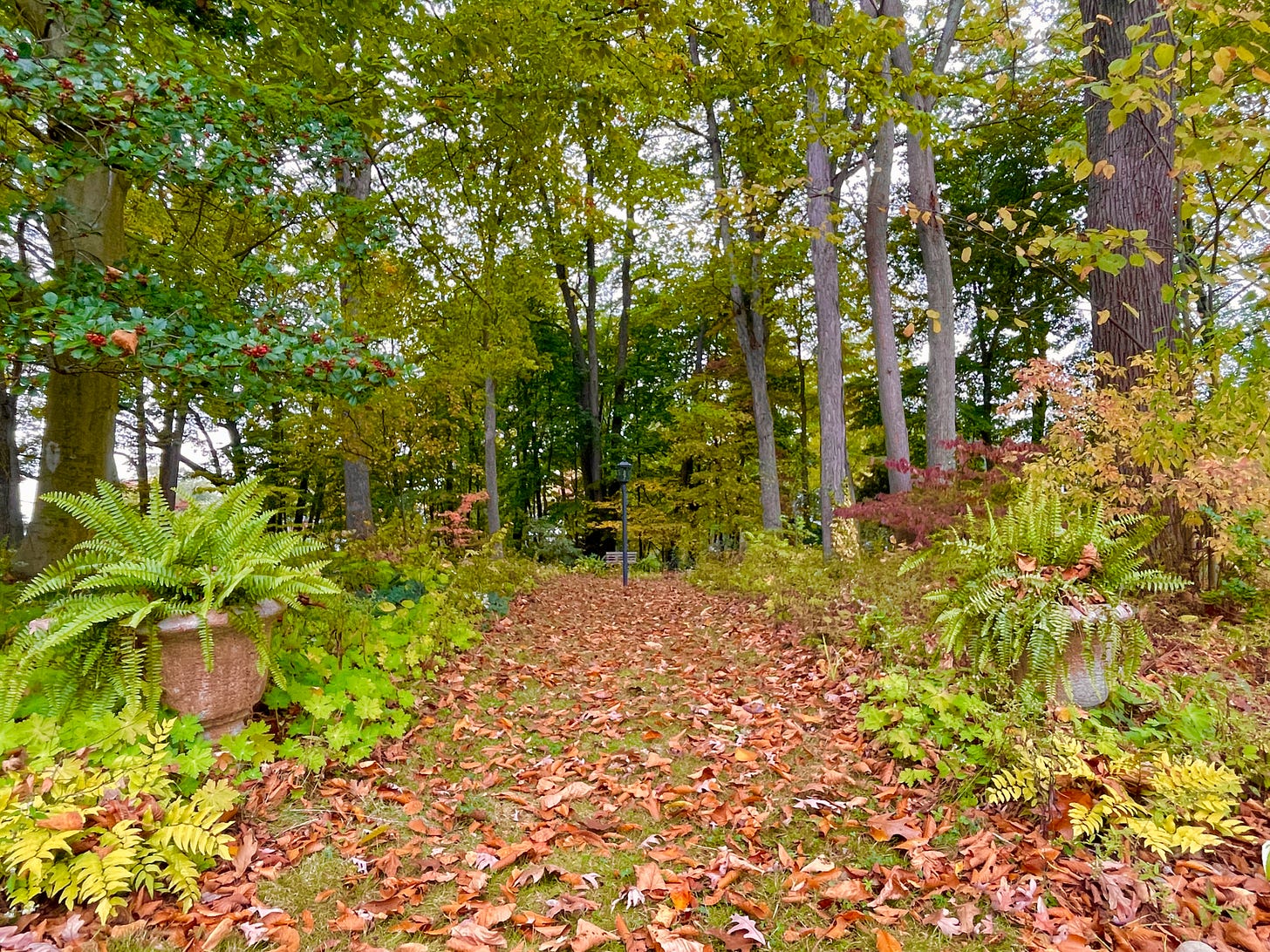“Every leaf speaks bliss to me
Fluttering from the autumn tree…”
Emily Bronte
Welcome back to my series on some common questions that people ask about our intensive, immersive garden in northwestern Pennsylvania zone 5. Today we will talk about a practical approach to leaves in the autumn:
#3 What do you do with all your leaves?
At Havenwood, we have about a half-acre of mature shade trees and are surrounded by neighboring trees as well, so fall is definitely a thing here! This year fall is arriving a bit later than normal - our trees are not as colored now (above) as they were exactly one year ago (below). Our night time temperatures are still in the 40’s and though the air feels chilly there is no predicted frost in sight.
So when the trees catch up this year, what will we do with all of these leaves?
When we arrived almost ten years ago, the leaves had been religiously blown away to the edge of the street for pick up each year. Consequently, the soil in the woodland was quite shallow and compacted. Moss and Bluets grow well in those conditions, but the many woodland plants that I hoped to grow would not appreciate such a deprived habitat. So we began at Havenwood in the same way that we had gardened at our previous garden on Gilmore Ave. We worked to keep all of the leaves. Every leaf is a gift to the garden.
Keep them all
It has been estimated that after the leaves fall in the northern hemisphere, which contains 80% of the deciduous forests, the earth spins ever so slightly (0.1 nanosecond) faster on its axis.1 They fall to the ground and their first service is to provide cover for insects and creepy crawlies, which form the bottom of the food chain and are therefore important for birds and mammals of all sorts. They provide a warm winter duvet for the forest floor. They cover the soil to protect it from the pounding rains of fall, winter and spring. They prevent frost heave around plants. Tons and tons of deciduous leaves fall to the earth to begin the process of replenishing the soil that was lost over the previous year due to erosion.
Looking at the leaves draws me further into the appreciation of the decay and change of this season. I am not yet ready to “sing when night’s decay ushers in a drearier day”2 but I have been consciously welcoming the garden’s senescence this year as it readies itself for sleep.
So how do we put all of the leaves to work at Havenwood?
Here are a few of the most important ways:
Keep reading with a 7-day free trial
Subscribe to Julie Witmer Gardens Newsletter to keep reading this post and get 7 days of free access to the full post archives.






